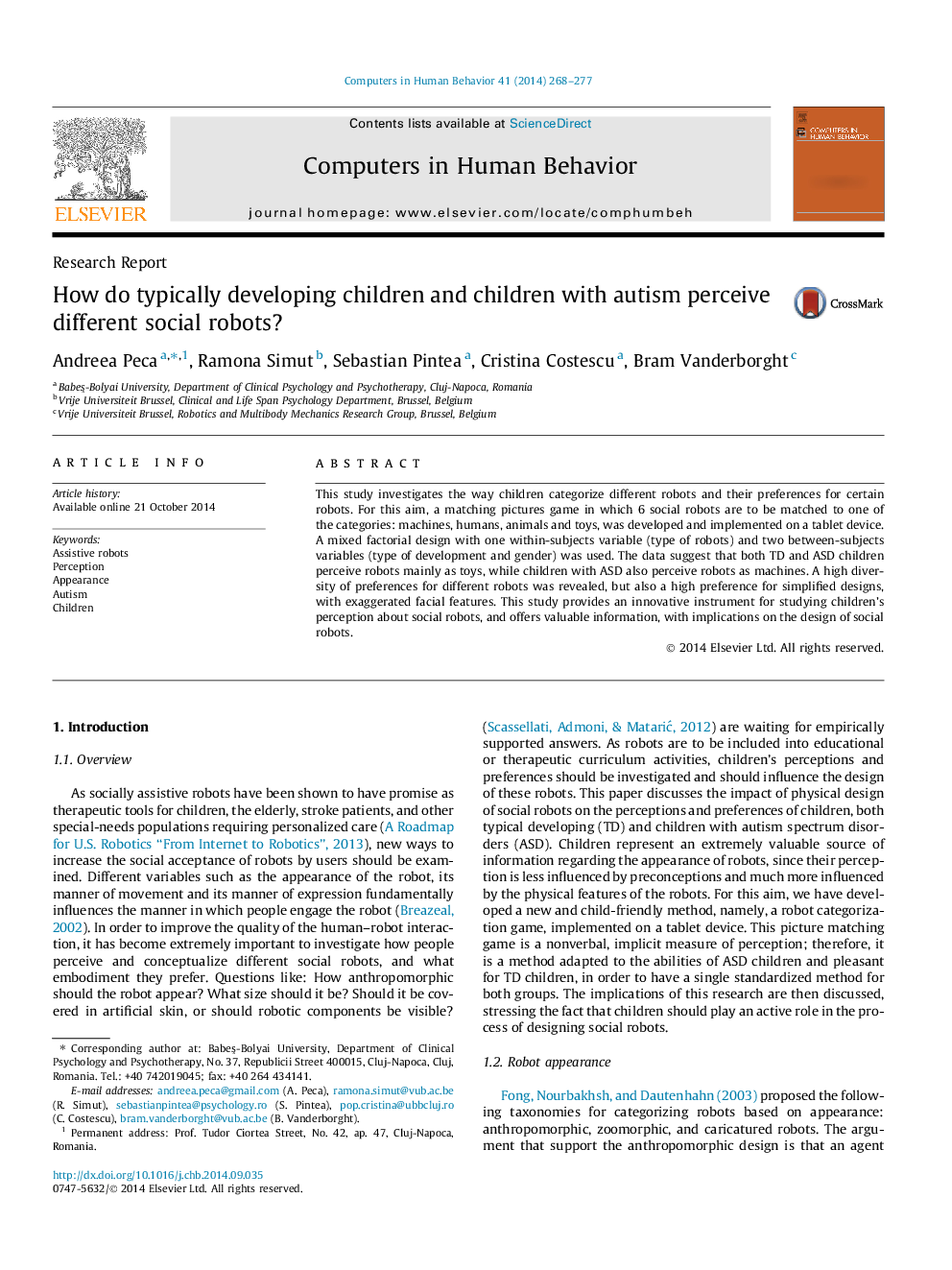| Article ID | Journal | Published Year | Pages | File Type |
|---|---|---|---|---|
| 350397 | Computers in Human Behavior | 2014 | 10 Pages |
•The way ASD and TD children categorize robots was investigated.•Which are the robots that children prefer was investigated.•A robots categorization game implemented on a tablet device was developed.•The fact that both TD and ASD children perceive robots mainly as toys was revealed.•The fact that children prefer simplified robotic designs was revealed.
This study investigates the way children categorize different robots and their preferences for certain robots. For this aim, a matching pictures game in which 6 social robots are to be matched to one of the categories: machines, humans, animals and toys, was developed and implemented on a tablet device. A mixed factorial design with one within-subjects variable (type of robots) and two between-subjects variables (type of development and gender) was used. The data suggest that both TD and ASD children perceive robots mainly as toys, while children with ASD also perceive robots as machines. A high diversity of preferences for different robots was revealed, but also a high preference for simplified designs, with exaggerated facial features. This study provides an innovative instrument for studying children’s perception about social robots, and offers valuable information, with implications on the design of social robots.
